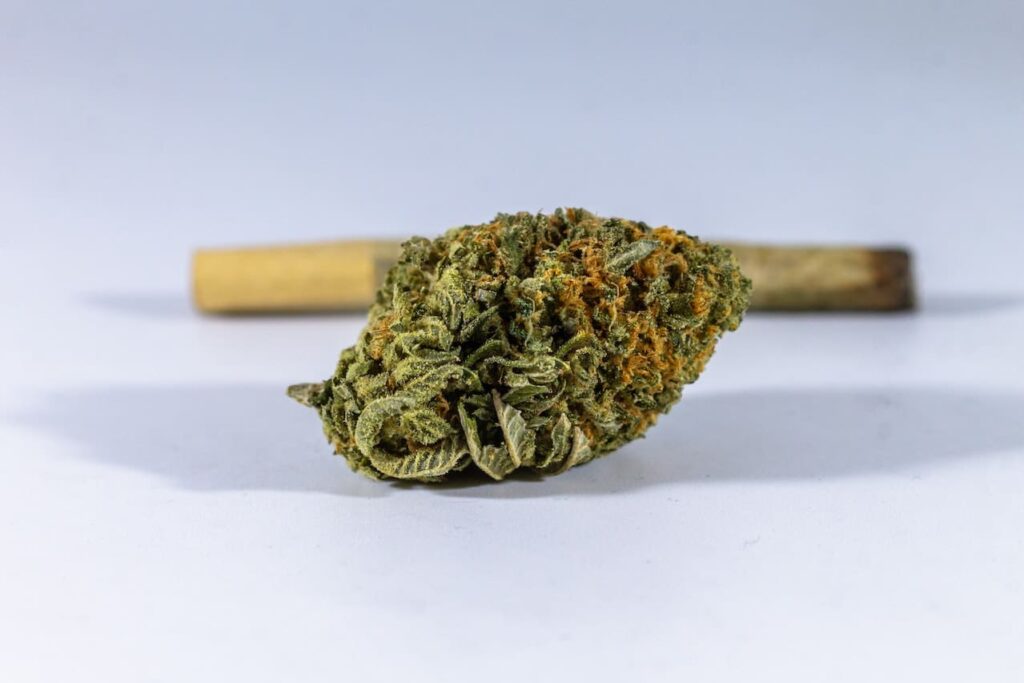
Blog
How CBD Interacts with the Body’s Pain Pathways

CBD, or cannabidiol, is a natural compound found in the cannabis plant that has gained popularity in recent years for its potential therapeutic effects, including pain relief. But how exactly does CBD interact with the body’s pain pathways? In this article, we’ll explore the science behind CBD’s mechanism of action for pain management and how it may help alleviate pain symptoms.
To understand how CBD interacts with the body’s pain pathways, it’s important to first understand the endocannabinoid system (ECS). The ECS is a complex network of receptors, enzymes, and signaling molecules that helps regulate various bodily functions, including pain sensation. CBD interacts with the ECS by binding to receptors in the body, which can help modulate pain perception and reduce inflammation. In this article, we’ll take a closer look at the science behind how CBD interacts with the ECS and other pain pathways in the body. Whether you’re dealing with chronic pain or occasional discomfort, this article will provide a deeper understanding of how CBD may help manage pain symptoms.
Endocannabinoids: The Body’s Secret Superheroes
CBD, or cannabidiol, is a non-intoxicating compound found in the cannabis plant that has gained immense popularity in recent years due to its potential therapeutic benefits. One of the most intriguing ways in which CBD interacts with the body is through its effect on pain pathways. CBD interacts with the body’s endocannabinoid system (ECS), which is responsible for regulating various physiological processes, including pain. The body’s natural cannabinoids, known as endocannabinoids, bind to the ECS receptors to activate pain pathways and alleviate discomfort. CBD, however, works differently. It doesn’t directly bind to the ECS receptors but instead modulates their activity to reduce pain and inflammation. This unique mechanism of action makes CBD a promising option for managing chronic pain and other related conditions.
Studies have shown that CBD can help alleviate neuropathic pain, which is a type of pain caused by damage or dysfunction in the nervous system. In one study, CBD was found to reduce pain and improve the quality of life in patients with peripheral neuropathy, a condition that causes numbness, tingling, and pain in the limbs. CBD has also been shown to be effective in reducing pain and spasticity in multiple sclerosis patients. Another study found that CBD could help manage pain in patients with arthritis by reducing inflammation and oxidative stress. These findings highlight the potential of CBD as a natural alternative to traditional painkillers, which often come with unwanted side effects and risks of addiction. With further research, CBD could become a game-changer in the world of pain management, offering a safe and effective solution for those suffering from chronic pain.
Endocannabinoid Receptors: The Cellular Gatekeepers for the Endocannabinoid System
CBD works by interacting with the body’s endocannabinoid system (ECS), which is made up of endocannabinoids and their receptors. These endocannabinoid receptors are the cellular gatekeepers of the ECS, responsible for receiving signals from the endocannabinoids and initiating various physiological responses, including pain regulation. CBD modulates the activity of these receptors, leading to reduced pain and inflammation. This unique mechanism of action has made CBD a promising option for managing chronic pain and other related conditions.
Studies have shown that CBD can help alleviate various types of pain, including inflammatory pain and cancer-related pain. In one study, CBD was found to be effective in reducing pain and improving quality of life in cancer patients undergoing chemotherapy. Another study found that CBD could help alleviate pain in patients with chronic migraines by reducing the frequency and intensity of headaches. These findings highlight the potential of CBD as a safe and natural alternative to traditional pain medications, which often come with unwanted side effects and risks of addiction. By targeting the endocannabinoid receptors, CBD could become a game-changer in the field of pain management, offering a more sustainable and effective solution for those suffering from chronic pain.
Life-sustaining Biochemical Reactions are Catalyzed by Enzymes
CBD, or cannabidiol, has been garnering attention for its potential to alleviate pain and inflammation. But did you know that CBD’s effects on the body’s pain pathways are intricately linked to the catalysis of life-sustaining biochemical reactions by enzymes? Enzymes are biological catalysts that speed up chemical reactions in the body, making them essential for various physiological processes, including pain regulation. CBD works by modulating the activity of specific enzymes, such as COX-2 and FAAH, which are involved in the production and breakdown of endocannabinoids. By inhibiting these enzymes, CBD can increase the levels of endocannabinoids in the body, leading to reduced pain and inflammation.
Research has shown that CBD’s ability to modulate enzyme activity can be beneficial for managing various types of pain. In one study, CBD was found to reduce pain and inflammation in mice with osteoarthritis by inhibiting the activity of COX-2, a key enzyme involved in the inflammatory response. CBD has also been shown to be effective in reducing neuropathic pain by inhibiting the activity of FAAH, an enzyme responsible for breaking down anandamide, a natural endocannabinoid that helps regulate pain.
These findings suggest that by targeting specific enzymes, CBD could offer a novel approach to pain management that is more sustainable and effective than traditional pain medications. As we continue to uncover the potential of CBD, its interactions with enzymes could unlock even more possibilities for pain relief and improved quality of life.
CBD and the ECS: Understanding their Interactions
The potential therapeutic applications of CBD and its interactions with the ECS are broad, and research is ongoing to investigate the full extent of its benefits. Some of the most promising areas of research include the use of CBD for pain relief, anxiety and depression, and epilepsy. For example, a 2018 study found that CBD was effective at reducing seizures in patients with Dravet syndrome, a rare and severe form of epilepsy. Other studies have shown that CBD can reduce anxiety and improve sleep in people with anxiety disorders. Additionally, CBD has shown promise as a treatment for chronic pain, with some studies suggesting it may be effective at reducing inflammation and neuropathic pain. Overall, while more research is needed, the interactions between CBD and the ECS provide a promising avenue for the development of new therapies for a variety of health conditions.
The Surprising Link Between Endocannabinoid Deficiency and Your Health
One interesting theory regarding the link between CBD and pain is the idea of endocannabinoid deficiency. This theory suggests that some people may have a deficiency in the natural cannabinoids produced by the body, which can lead to an imbalance in the ECS and contribute to the development of chronic pain and other health conditions. By supplementing with CBD, which can interact with the ECS in a similar way to natural cannabinoids, it may be possible to restore balance to the system and alleviate pain. While more research is needed to fully understand the role of endocannabinoid deficiency in pain, this theory provides a potential explanation for why some people may be more responsive to CBD for pain relief than others.
Our Final Thoughts On How CBD Interacts with the Body’s Pain Pathways
The interaction between CBD and the body’s pain pathways is a complex and multifaceted process that is still being explored by researchers. However, the potential therapeutic benefits of CBD for pain relief are clear, with numerous studies suggesting that it may be effective at reducing pain and inflammation for a variety of conditions, including chronic pain, arthritis, and neuropathic pain. As research into the mechanisms of CBD and the ECS continues, it is likely that new and innovative therapies will emerge to provide safe and effective pain relief for people of all ages and backgrounds.
https://youtu.be/AYNTEB1X5Kghttps://youtu.be/bhCC0ydd7hE
Are You Looking for the Best CBD Products For Pain on the Market Today?
Looking for a powerful solution to alleviate your pain and discomfort? Look no further than Mary Jane’s CBD Dispensary! We specialize in premium CBD products for pain, both in our brick-and-mortar stores and online. Our all-natural, organic hemp extracts will soothe your body and mind, leaving you feeling relaxed and rejuvenated. Say goodbye to stress and hello to a happier, healthier you!
But that’s not all — our CBD products also have a delicious taste that will tantalize your taste buds. And with Mary Jane’s, you can shop with confidence, knowing that you’re getting only the best quality products. We never compromise on quality, so you never have to compromise on your well-being.
With locations in several states and an online CBD store, shopping for premium CBD has never been easier. Don’t settle for ineffective or potentially harmful products. Experience the difference that Mary Jane’s makes!
Disclaimer: The materials available on this website are for informational and entertainment purposes only and not for the purpose of providing medical advice. You should contact your doctor to obtain advice with respect to any particular issue or problem. You should not act or refrain from acting on the basis of any content included in this site without seeking medical or other professional advice. The information presented on this website may not reflect the most current medical developments. No action should be taken in reliance on the information contained on this website and we disclaim all liability in respect to actions taken or not taken based on any or all of the contents of this site to the fullest extent permitted by law.











